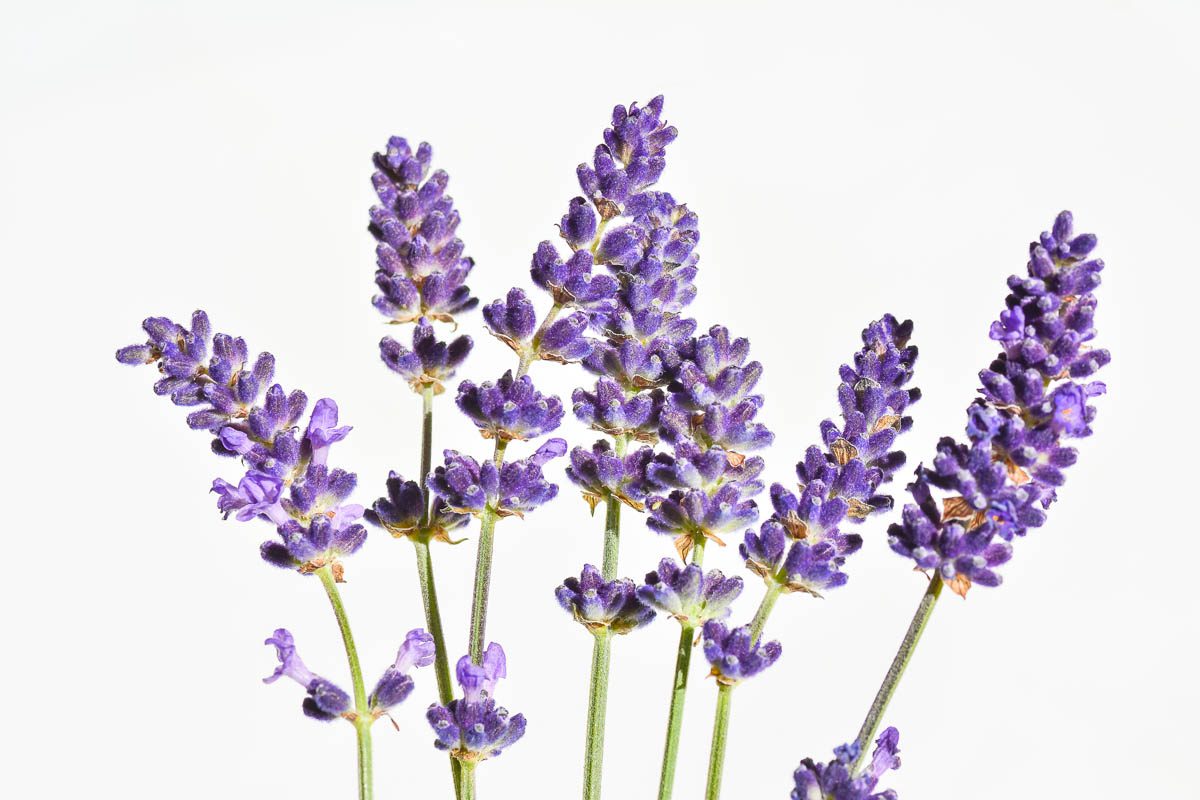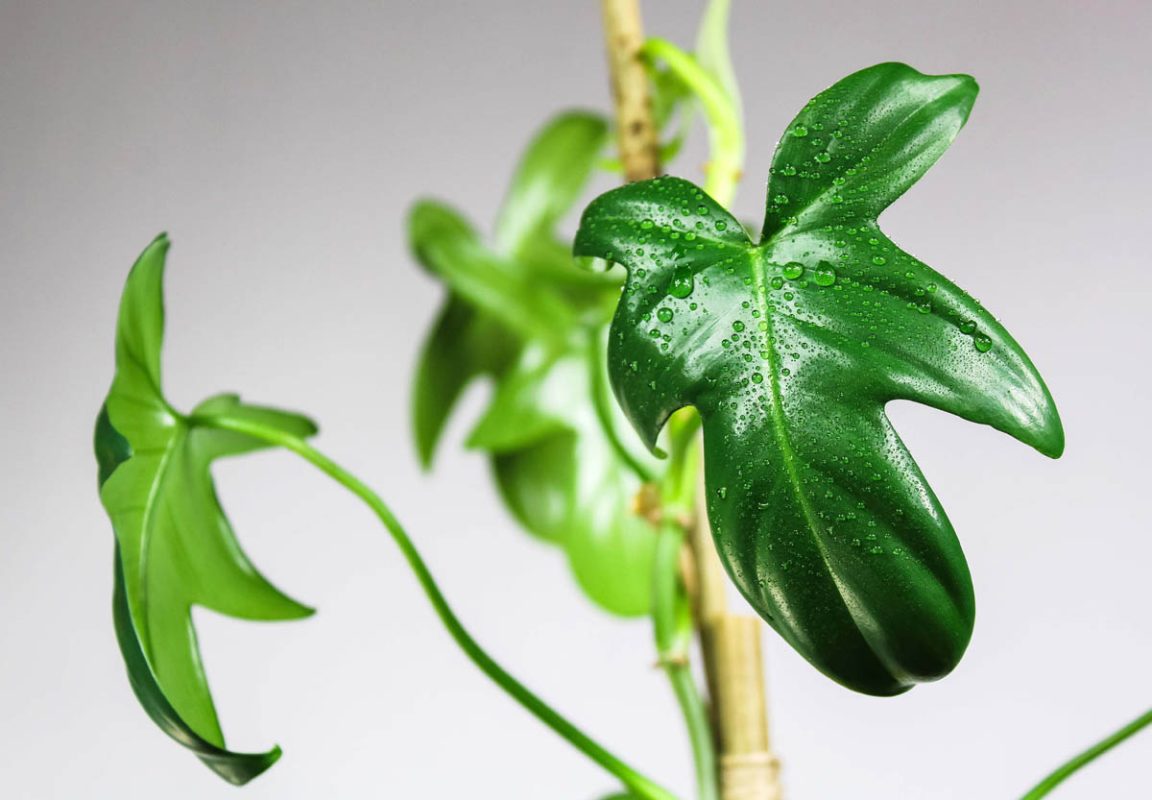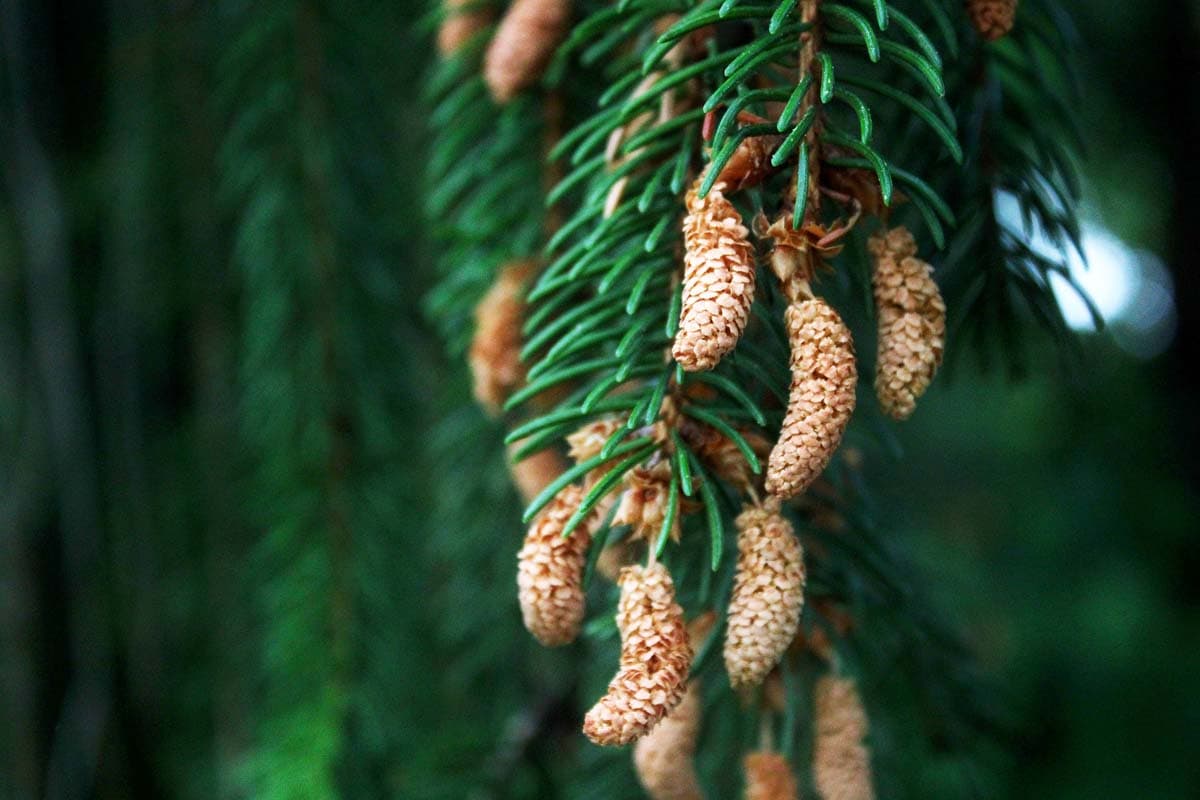Lavender is toxic to dogs. The toxic principles are linalool and linalyl acetate which are biologically active compounds that can cause dermatitis or gastrointestinal upset depending on the route of exposure.
What is lavender?
- Family: Lamiaceae
- Botanical name: Lavandula spp.
- Common names: Lavender
- Leaf colour: Green/grey
- Flower colour: Purple, pink, white
- Toxicity: Toxic to dogs
- Toxic properties: Linalool and linalyl acetate
- Toxic parts: All parts

Lavender is a hardy plant native to the Mediterranean and northern Africa and is a popular plant among gardeners for its ease of care and attractive, aromatic flowers. This herbaceous perennial is grown commercially for its essential oils¹. Lavender oil is widely used in herbal medicine as well as a fragrance in soaps, beauty products, scented candles and mist diffusers. The flowers of English lavender (Lavandula angustifolia) can be used to flavour drinks (teas, syrups, cocktails), salads, cakes, buttercream frosting and ice cream.
The highly scented volatile compounds are widely used in the fragrance and cosmetic industry and in alternative medicine. Lavender is cultivated worldwide for its volatile oil which has a number of actions including²:
- Antimicrobial
- Antispasmodic
- Relieves anxiety
- Antidepressant
- Neuroprotective
In traditional human medicine, lavender oil has been used to relieve anxiety, insomnia, depression, headache, wound healing, muscle relaxation, post-surgical pain relief, hair loss, acne and eczema³.
Toxicity
Lavender contains 300 chemical compounds, two of which are linalool and linalyl acetate. These monoterpenes can cause dermal irritation as well as gastrointestinal disturbances (nausea, and vomiting).
Exposure occurs via dermal (skin) contact, ingestion and inhalation.
Most cases of lavender poisoning occur when the dog is exposed to undiluted lavender essential oil. There is some evidence that lavender essential oil applied to the collars of trial dogs may reduce stress⁴. However, pet owners must be aware there are risks when using essential oils on or around pets and should only use them after consultation with a veterinarian.
Clinical signs
Signs of lavender toxicity depend on the route of exposure. Smelling, brushing against, or consuming a small amount of lavender plant is unlikely to cause a toxic response in dogs, unless a large volume is consumed (unlikely). Swiss physician and chemist Paracelsus coined the term ‘the dose makes the poison‘. There is a significantly higher risk of poisoning from exposure to highly concentrated lavender essential oil than from the consumption of small amounts of plant matter. Exposure can be more dangerous if lavender essential oil or lavender-scented products are applied to the skin, which the dog may lick off.
Dermal
Ingestion
- Nausea
- Drooling
- Vomiting
- Loss of appetite
- Mouth ulcers
- Oral irritation
Inhalation
- Coughing
- Sneezing
- Wheezing
- Difficulty breathing
First aid
If the dog has chewed part of a lavender plant, try to carefully remove any remaining plant matter. Then offer the dog a drink of something tasty such as milk. Contact your veterinarian if the dog develops clinical signs such as nausea and vomiting.
If the dog has had dermal (skin) exposure to lavender essential oil or products containing lavender, bathe the dog in warm water and plain dishwashing detergents such as Dawn, Morning Fresh or Fairy Liquid. This is the type of dishwashing liquid you use to hand wash.
Any dog who is experiencing breathing difficulty should see a veterinarian immediately. Have somebody ventilate the house by opening doors and/or windows to help dissipate any remaining lavender vapour.
Treatment
The veterinarian will assess the dog and tailor the treatment according to the route of exposure and clinical signs.
- For dogs whose skin or fur has been exposed, the veterinarian will bathe the dog in warm water and dishwashing detergent to remove any remaining lavender oil.
- If ingestion was recent, the veterinarian can induce vomiting to remove any remaining plant matter (or product) from the gastrointestinal tract. This is usually followed by the administration of activated charcoal to bind to any remaining lavender and prevent further absorption.
- Dehydration from fluid lost during vomiting can be managed with intravenous fluids. This can also promote urination, which will help to flush any remaining toxins from the body.
- Antiemetics (anti-nausea) can be given to dogs with persistent vomiting, followed by a bland diet for several days to rest the gastrointestinal tract.
- If the biochemical profile shows liver derangements, liver protectants such as S-Adenosylmethionine (SAMe) and silymarin, an extract of milk thistle can be administered. They act both as antioxidants and free radical scavengers.
Safety
Lavender plants are safe to grow in homes with dogs unless your dog has a serious interest in chewing the plant.
Do not use essential oils on dogs unless you have been instructed to do so by a veterinarian. There is some evidence that lavender essential oil is a mosquito repellent⁵, however, there is only limited data on the effectiveness of lavender plants. If you do burn or use an air mister in the home, ensure the room is well-ventilated and the dog has the opportunity to leave the room if the smell becomes overwhelming. Take special care around young kittens, lactating queens, and dogs with kidney or liver disease.
REFERENCES
Julia is a writer and landscape consultant from Wollongong with a love of horticulture. She had been an avid gardener for over 30 years, collects rare variegated plants and is a home orchardist. Julia is passionate about learning and sharing her knowledge of plant propagation and plant toxicology. Whether it’s giving advice on landscape projects or sharing tips on growing, Julia enjoys helping people make their gardens flourish.










